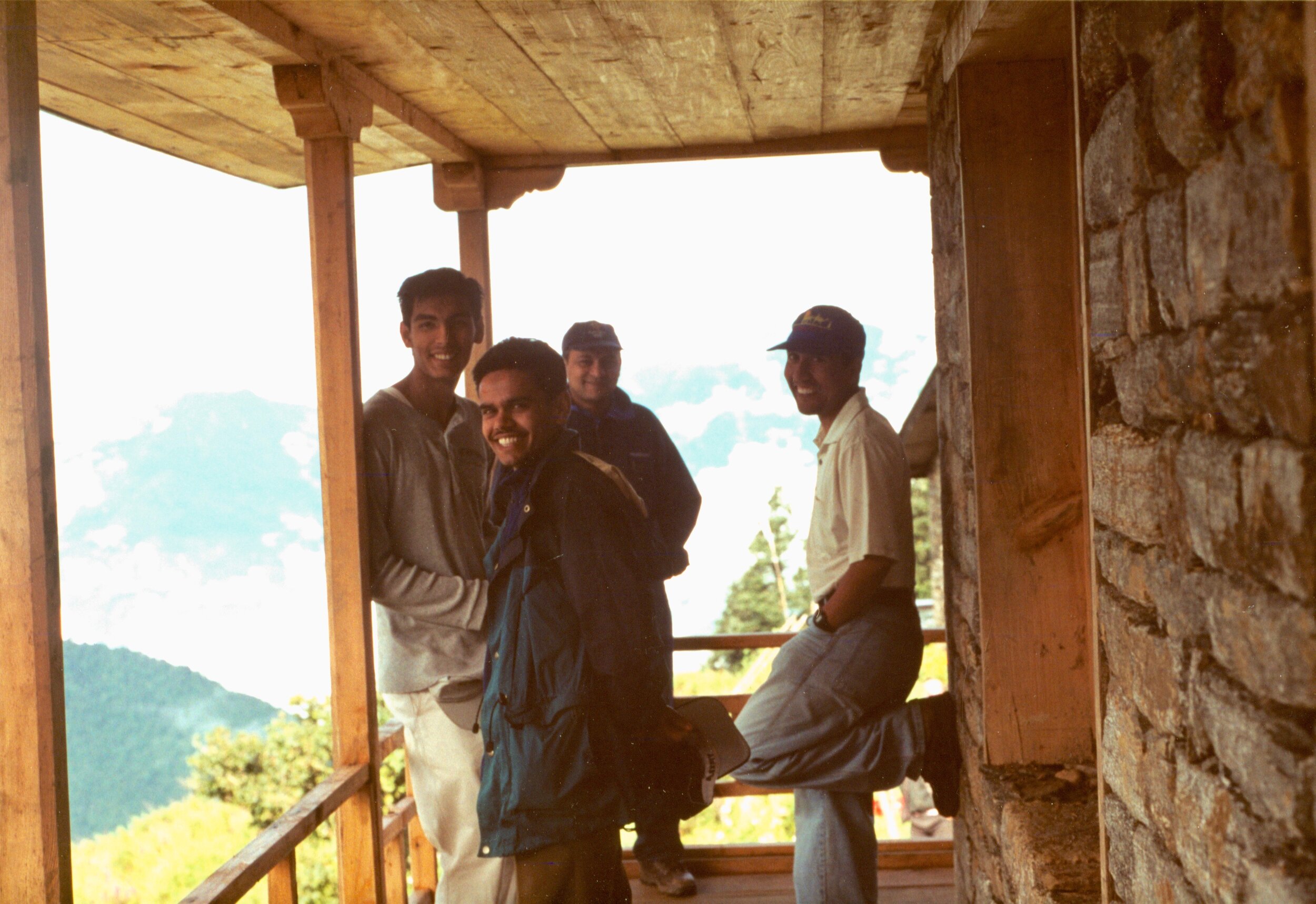The Origin of BioSherpa™






















Cumbo and Radder in Kathmandu 1998
Lifelong friends and colleagues, Tom Cumbo and Destin Radder built careers in medicine and research. Fascinated by discovery and adventure, their first foray into international medicine began with a trip to the Himalayan region of Nepal in 1998. They conducted multiple excursions into the mountains to test a novel hypothesis regarding altitude illness. The collection of data resulted in multiple publications in peer-reviewed medical literature (Link Here). While performing their research, Cumbo and Radder also built a clinic to treat the local pilgrims for a variety of maladies from benign issues to life-threatening acute illness. Cumbo noticed a preponderance of lung disease, especially in women who spend a lot of time in smoke-filled dwellings common at 3-5000 meters.
Destin and Tom, Dunche, Nepal 2001 recording data at the origin of the 3 day climb to Lake Gosainkunda
As an infectious diseases specialist, Cumbo wondered if there were nuances to any pathogens that may be involved in these geographically isolated populations. Could there be preserved genetic material that could provide clues for antibiotics or vaccines?
These bacteria had evolved in these isolated tribes and had not been exposed to antibiotics or foreigners. Cumbo was fascinated by the research possibilities, and started to work with Radder on a transport medium that would allow them to collect biological samples in diverse locations and bring them back to sophisticated laboratories for testing. In addition to their work in the US, this research brought them to the Andes Mountains of Peru and the crowded city centers of Lima where they concentrated on pulmonary and gastric samples. Using his variety of skills honed from a lifetime of electrical and mechanical work, Radder built research facilities in remote locations to facilitate the projects.
Thomas Cumbo and Dr. Buddha Basnyat, Patan Hospital, Kathmandu, Nepal 2000
Cumbo attending to patient in 2000 with high altitude cerebral edema using dexamethasone.
Cumbo was surprised by the amount of growth and the increased number of species isolated using their experimental transport media. As his experience with clinical infectious disease work expanded through the care of thousands of patients as well as infection control work, he couldn't help but wonder what was happening at the biochemical level that allowed for such unique findings.
Upon meeting Dr. Chris Hutson through administration and leadership work, Cumbo and Hutson together realized the patient safety and potential economic realities of these novel findings. They delved into the latest research and decided to pursue the possibility that native biofilms were "protecting" bacteria in clinical specimens and, if these bacteria could be released after the sample was collected from the patient, the ability to isolate them in the lab would have important implications for patient care and research.
The three founders, Hutson, Cumbo, and Radder created a new formulation and designed the BioSherpa™ Specimen Transport System (STS).
Radder and Cumbo in the Andes mountains of Peru, 2003.
BioSherpa™ STS targets bacterial biofilms but also preserves the fragile bacteria that live within.
Hutson and Cumbo knew from their clinical work that patients receiving antibiotic therapy usually had "negative" microbiology samples in the lab. As a result, the founders concentrated on patients that were sick and were being treated with antibiotics.
What if, they wondered, they could dive deep into the biology of the sample and "rescue" the few remaining bacteria that were not yet killed by the antibiotics?
Patients would benefit by getting only the necessary antibiotics and avoid a broad range of drugs that have dangerous side effects.
Hospitals would likewise benefit by knowing what kind of bacteria are causing infections within their facilities and whether difficult-to-treat variant pathogens are present. Hospitals could also document the true severity of their patients' illnesses and ensure that resources are properly appropriated.
The research to date has involved bone, sputum and gastric samples. Results are fascinating and have earned them broad patent protection.
As a result, BioSherpa™ LLC has emerged as a first-in-class biofilm disruption diagnostic company. Our goal is to provide novel diagnostic assistance for patients suffering from infectious diseases and grow a collection of geographically diverse samples for future research and development.
The team has started research and has successfully shown the superiority of BioSherpa™ STS compared to control in a few key areas.




